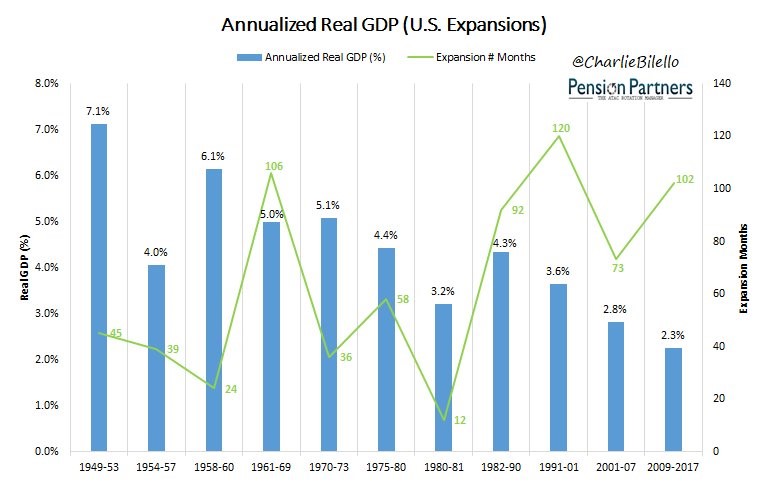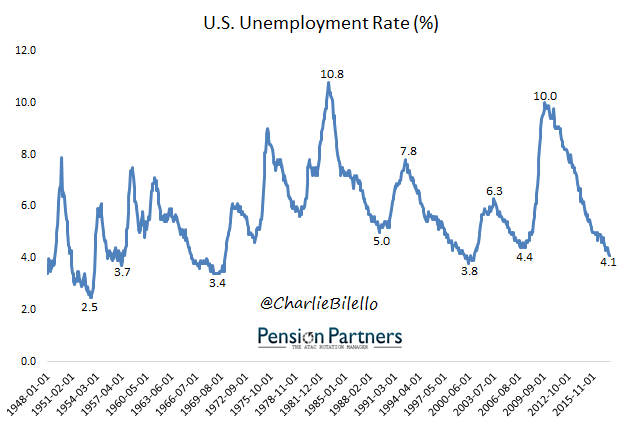Let’s pretend you were living in a bunker since February 2009 with no access to the outside world. You come out of the bunker in February 2018 and are presented with the following facts:
1) The U.S. economic expansion is now eight and a half years long, the 3rd longest in history at 102 months and counting.

Data Sources: NBER, FRED. Date Range: January 1949 – December 2017.
2) The U.S. Unemployment rate has moved from 10% in October 2009 to 4.1% in January 2018. This is its lowest level since 2000.

Data Source: FRED. Date Range: January 1948 – January 2018.
3) Non-farm payrolls have been positive for 88 consecutive months, by far the longest streak in history (previous record was 48 months).

Data Source: FRED. Date Range: January 1939 – January 2018.
Given this backdrop, where would you expect the Federal Funds Rate to be?
If you said 4%, 5% or higher, you would be mistaken. Those would have all been good guesses given the historical precedent before 2009, but the period since then has been anything but normal.
The Federal Funds rate stands today in a range of 1.25% to 1.50%. To put that range in perspective, it is still below the Fed Funds Rate at the time of the Lehman Brothers bankruptcy (2.00%), when the U.S. economy was in the midst of the worst recession since the Great Depression.
This is another way of saying the Federal Reserve has maintained emergency monetary policy for far longer than any period in history. Just how easy has this policy been?
One way to measure relative easiness is to take the Effective Federal Funds Rate over time and subtract Core CPI over the prior year. This normalizes for the level of inflation, as higher inflation warrants a higher Fed Funds Rate and vice versa.
If we take the current Effective Federal Funds Rate (1.4%) and compare it to Core Inflation (Consumer Price Index (CPI)) over the past year (1.8%), this leaves us with a real Fed Funds Rate of -0.40%. The real Fed Funds Rate has now been negative for 117 consecutive months. The prior record was only 39 months.







